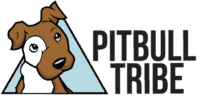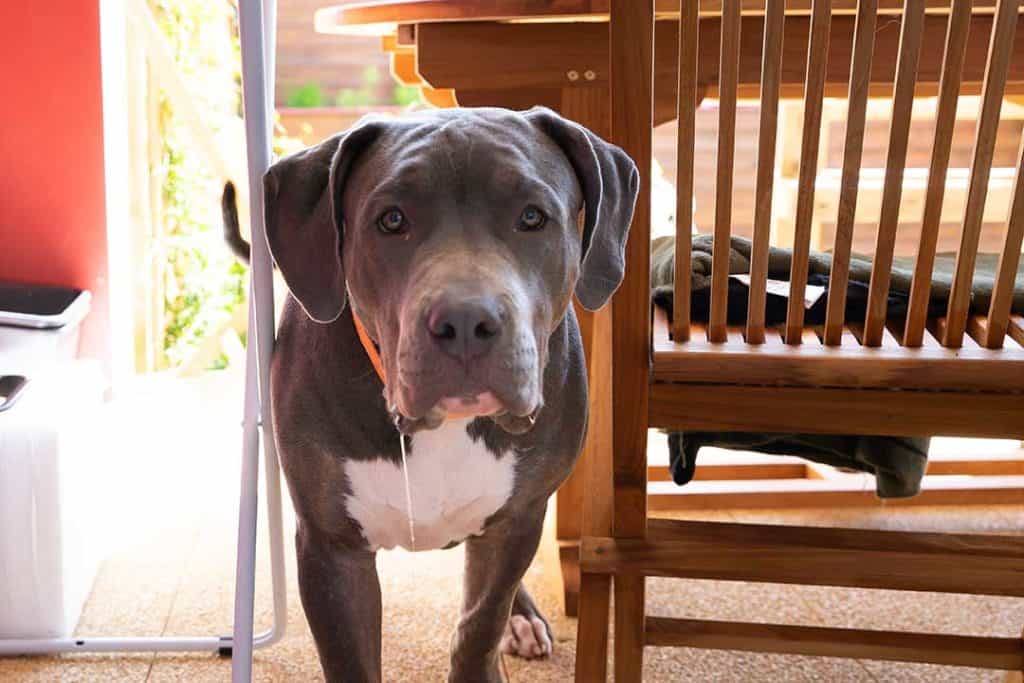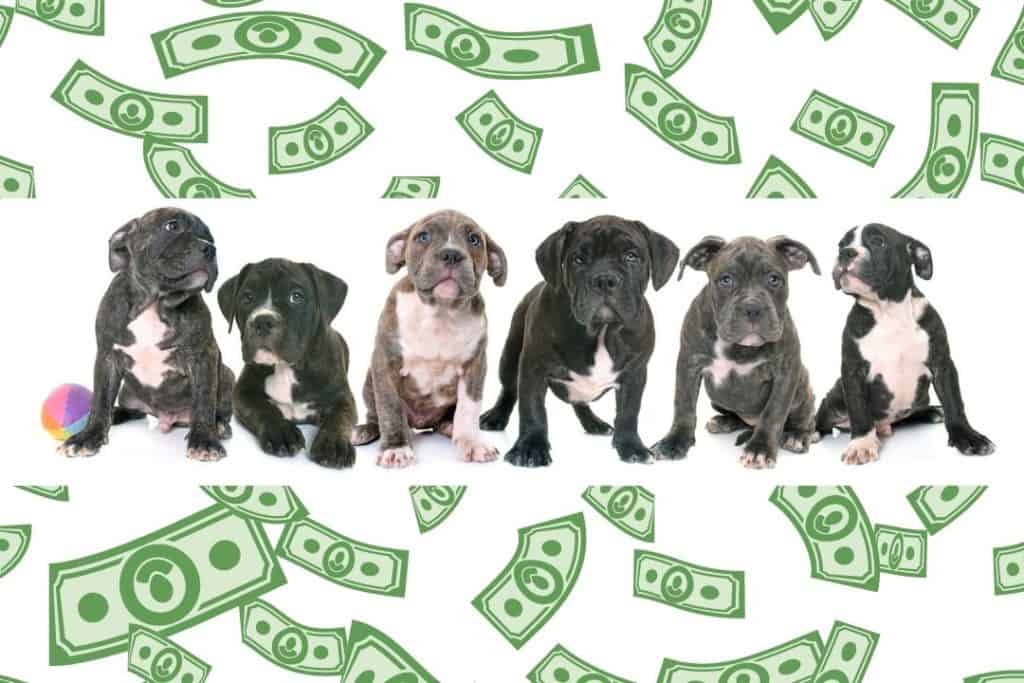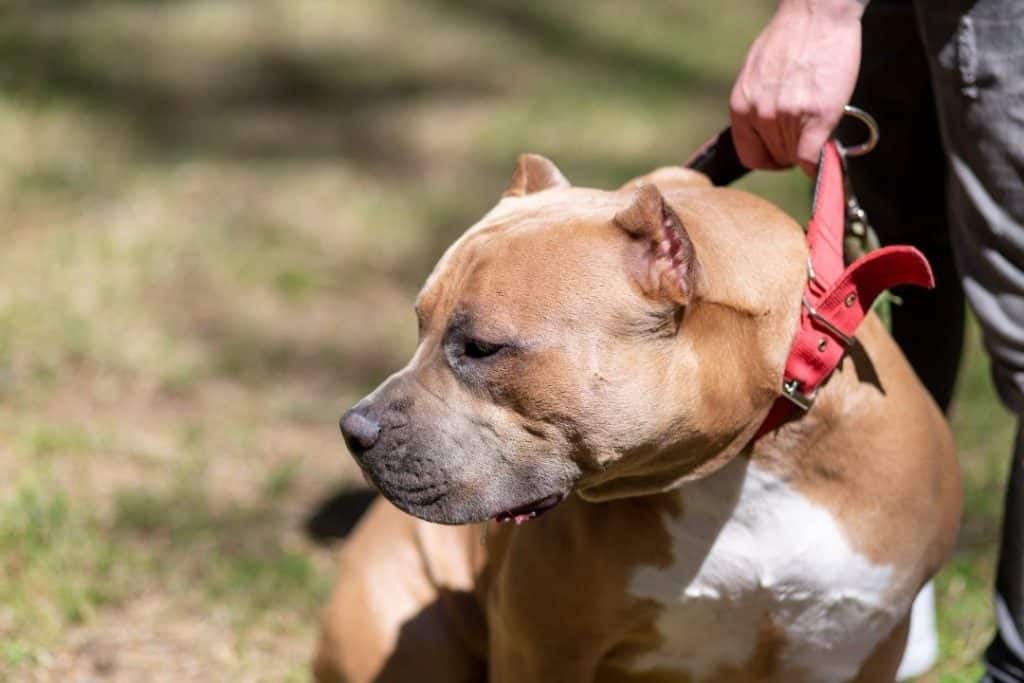This article may contain affiliate links, and I will be compensated if you make a purchase after clicking on my links (at no additional cost to you)
The American Bully is one of many dog breeds that drool but still makes for a lovable pet. But how well-prepared are you for this gross drooling habit?
The American Bully drools because it has big cheeks where pockets of saliva can develop. Drooling can develop when the Bully just drinked water, is excited or stressed, or in response to a number of different stimuli. Drooling can also be a sign of health problems, like dental disease or allergic reaction.
This article will discuss the American Bully, why they drool, and what other dog breeds drool, as well as what to do if your dog is drooling excessively and how to clean drool from your clothes or towels.
What It Means When Your American Bully Drools
Your American Bully may produce extra saliva in response to several different stimuli in a perfectly healthy and normal way. Some dogs naturally drool more than others, but if you’re concerned about the amount your dog is drooling, consider whether one of these situations may apply.
Disclaimer: This is purely informational and not veterinary advice. Please consult your veterinarian if you have concerns about your dog’s health, especially if their appearance or behavior seems abnormal. Sudden changes could be a sign of a serious health condition.
The Pavlov Reflex
Your Bully may start drooling in anticipation of a meal, in what’s called the “Pavlov Reflex.” They recognize things associated with a meal, including the time of day, the sound of the food container being opened, or even the sight of you eating. Their body becomes prepared for the coming food by producing more saliva.
Excitement
Your Bully may drool in response to several exciting stimuli, including a walk, games, or sexual desire when seeing another dog. New and exciting smells can also cause a Bully to start drooling. However, this is a perfectly healthy response and not something that should worry you.
Stress
A Bully also drools in response to stressful situations, like the sight of an aggressive dog or a noisy environment. If you yell at them or tie them up when they’re not used to it, don’t be surprised if they develop more drool than normal. If your Bully appears to be drooling because of stress, give them time and space to relax and calm down.
Teething
Bullies also drool as puppies when they have new teeth coming in, usually at about 3 weeks when the puppy teeth come in and then again at about three and a half months when the adult teeth replace them. Both times, the puppy’s mouth will be especially sensitive, and you may notice your Bully eating less than normal.
Overheating
Drooling can also be a sign that your Bully is overheating, which is very dangerous if left untreated. If your Bully drools while panting heavily, you should wet them with cool tap water and encourage them to rest, even if they seem eager to keep playing. If they’re also disoriented and collapsing, convulsing, or having diarrhea, consult a veterinarian right away.
To avoid problems with overheating, provide water often and watch your dog closely for signs of exhaustion. Look for any wobbliness or weakness and encourage them to slow down when necessary. With rest and hydration, your dog can safely play without becoming overheated.
Dental Problems
Drooling can be a signal that your Bully has serious dental problems, especially if they also have any of these other symptoms:
- Tooth discoloration
- Bad breath
- Inflamed or bloody gums
- Swollen face
- Lack of appetite
- Lethargy
- Difficulty eating
Extra saliva develops any time tartar builds up in the mouth or as the gums or teeth become irritated. Often, dogs will not show any other signs that there’s a problem until their pain is severe, so make sure that you take these signs very seriously once they do develop. They could be signs of tooth fracture, oral infections, or periodontal disease.
Allergies
Bullies may drool in response to several allergens, including any of the following:
- Dust
- Mold spores
- Food
- Flea saliva
- Prescription drugs
- Perfumes
- Cleaning products
- Pollen
Allergic reactions can be very serious, so be sure to take your dog to the vet if you notice any other severe or worsening symptoms associated with allergies. These may include:
- Excessive licking of the paws
- Butt-scooting and scratching
- Hair loss
- Coughing
- Sneezing
- Vomiting
- Diarrhea
- Swelling of the joints, feet, or face
There are also some things you can do to make an allergic reaction less likely to happen in the first place. Consider wiping your dog’s paws after a walk, using a hypoallergenic shampoo, and avoiding feeding your dog food not made for dogs.
Foreign Bodies
Bullies may drool in response to a foreign body if they get a bone, wood fragment, or other object wedged inside their mouth. These objects often lie along the roof of the mouth, pinned between rows of teeth. Objects can also get trapped between the teeth and along the gums.
Other Dog Breeds That Drool
Dogs with larger cheeks and lips are more likely to drool because they have bigger pockets where saliva can gather. These include American Bullies and their relatives, as well as these ten breeds:
- Saint Bernard
- Dogue de Bordeaux
- Bloodhound
- Bulldog
- Newfoundland
- Neapolitan Mastiff
- Bernese Mountain Dog
- Bull Mastiff
- Boxer
- Great Dane
Remember that even though these dogs may drool, they still make great pets! In many cases, there’s nothing wrong with the dog, and it simply requires some maintenance.
How To Handle Dog Drool
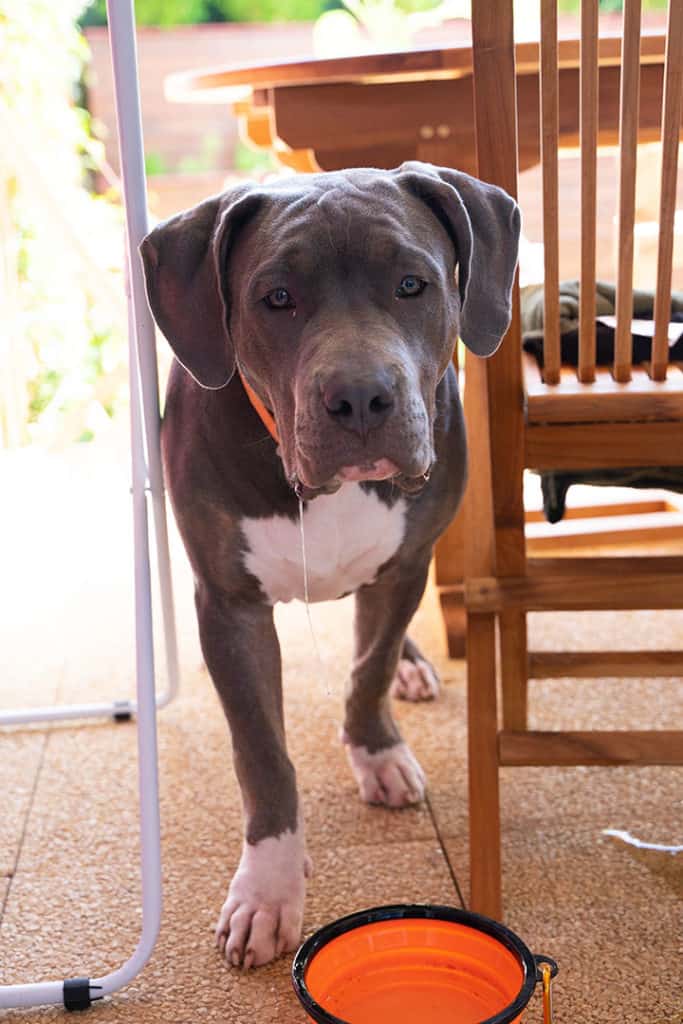
Figuring out the cause of your dog’s drooling helps in determining the best way of handling it. If you sense that your dog is drooling out of excitement, for example, you can try settling your dog down by placing the dog in a quiet area while guests are around.
Treating any underlying medical problems is a critical way to deal with dog drool, as the drool may be a sign that teeth need to be extracted or a foreign object needs to be removed. Be sure to consult a veterinarian before attempting any kind of medical treatment.
Keeping your dog healthy is the number one way to reduce the amount of dog drool that develops, but you can also keep your house cleaner by choosing home surfaces that can be wiped clean and anticipating messes. Note that dog drool carries many disease-causing bacteria, so droolly messes should be cleaned with antibacterial soap or wipes.
Additionally, you may consider outfitting your dog with a bandana or bib to absorb any drool before it can create a mess.
Cleaning Dog Drool From Clothes
Dog drool can stain clothes in some cases, and so you should consider treating your clothes or towels that have drool on them separately before adding them to the laundry pile. You’ll need to soak the clothes in dishwashing detergent and ammonia, following the directions below to ensure a good clean.
- Combine ½ tsp dishwashing detergent, 1 tbsp ammonia, and 4 cups of water in a bucket.
- Soak your garment in the bucket for 15 minutes.
- Scrub the stains with a toothbrush.
- Return the garment to the bucket for another 15 minutes.
- Rinse the garment in water, then apply a pre-wash stain remover to the area.
- Let sit for 30 minutes.
- Wash with regular laundry detergent and bleach.
Conclusion
American Bullies are known to drool more than other dogs because they have big cheeks where saliva can collect, but drooling can also signify serious health conditions. You should monitor your dog’s other symptoms and be sure to consult a veterinarian if you have any concerns.
Sources
- American Kennel Club Canine Health Foundation: Dehydration and Overheating in Dogs
- The Spruce Pets: Common Dog Teeth Problems
- The Spruce Pets: 10 Dog Breeds that Drool
- Rover: The Dog People: 6 Signs Your Dog is Having an Allergic Reaction
- VCA Animal Hospitals: Dealing with Drooling
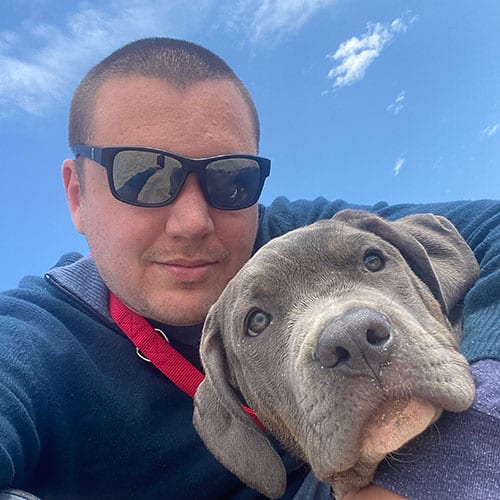
I created this blog to share my passion for bullies, and help current and future pitbull owners with things like diet and education.
Hope you find it useful, don’t hesitate to drop a comment on my articles!
